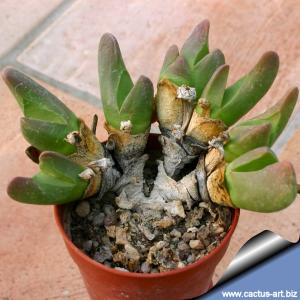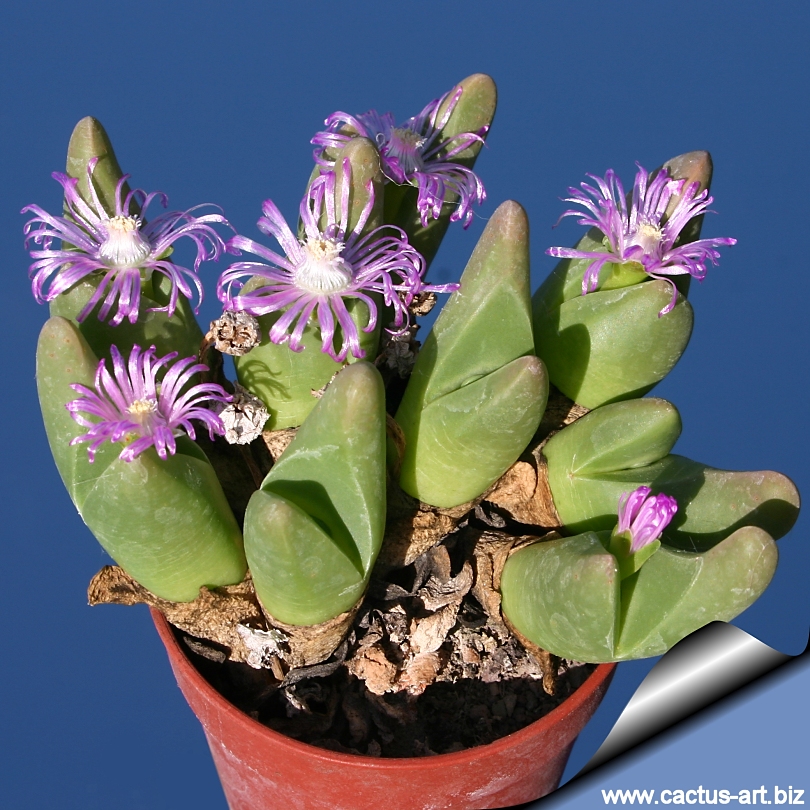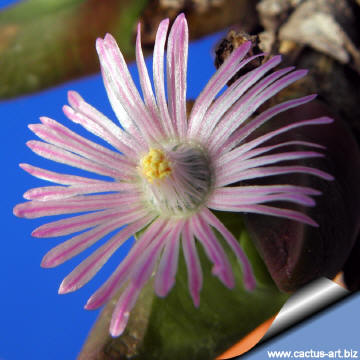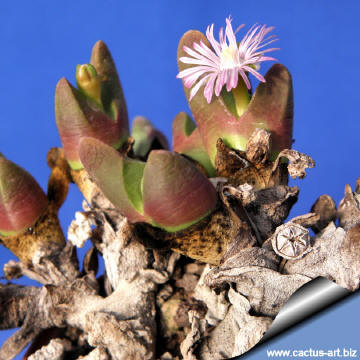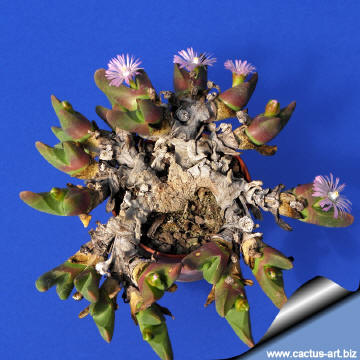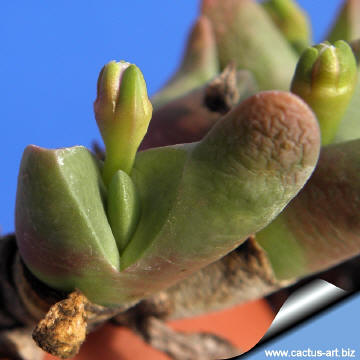-
x
Description
|
In Afrikaans it is called ‘Haaibekkie’. In English this means ‘beak of a shark’. This very apt name is derived from the shape of the two leaves that grow closely together and looks exactly like the beak of a shark. Family: Mesebrianthemaceae (Aizoaceae) Scientific name: Gibbaeum shandii N.E.Br. Origin: Swelledam, West Cape, South Africa. Habitat & ecology:Grows on quartzite slopes where it forms conspicuous clumps. It recal plants of the genus Argyroderma and like them, also favour quartz fields. The similar growth form are almost certainly the result of their similar lifestyles. The occurrence of white plants on white quartz-strewn ground is often quoted as a mode of concealment.
NOTE: Various species of the genus Gibbaeum are called in Afrikaans, ‘Haaibekkie’. In English this means ‘beak of a shark’. This very apt name is derived from the shape of the two leaves that together form the plant growth. They differ in size and because these leaves grow closely together the fissure of most species looks exactly like the beak of a shark, though without the teeth of course.
|
|
|
Description: G. shandii is a dwarf, perennial, anisophylous, cushion forming succulent. Its body resembles a shark's head. formed by 1 long finger-shaped leaf & 1 shorter leaf. It a low winter growing species, although it will grow taller in cultivation than it does in the wild. Up to 5 cm tall and 10 (or more) cm wide. Note: Some authors synonymize this taxon with the similar G. pubescens, but it differs slightly for its stellate hairs and the conical tops of the capsules. |
|
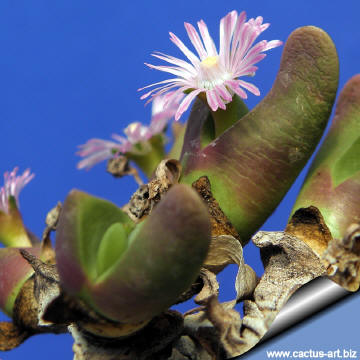 |
|
 |
|
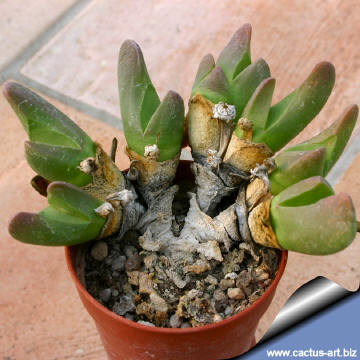 |
|
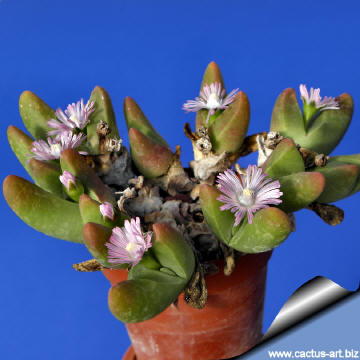 |
|
|
Cultivation: Gibbaeums are "winter" growers heading for summer dormancy and notoriously difficult to grow because they rot very easily, but G. shandii is not difficult at all in cultivation, keeps going over the summer too and don’t’ need particular care . Requires little water otherwise its epidermis breaks (resulting in unsightly scars). Water minimally in summer, only when the plant starts shrivelling, water more abundantly when they are growing in the fall and spring. Requires good drainage. Keep cool and shaded in summer, need full sun or light shade. They will take a light frost (Hardy to -5°C) if they are in dry soil. Propagation: Seeds, cuttings. |
|

